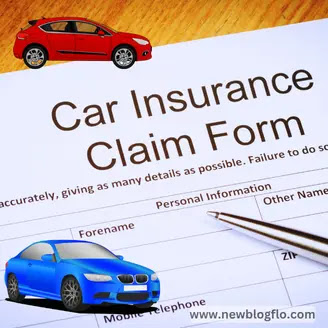Car Insurance Excess: Your Financial Responsibility
Car insurance excess is a crucial aspect of any insurance policy, but it can be confusing for many drivers. In this detailed guide, we'll explore everything you need to know about car insurance excess, including what it is, how it works, and how to choose the right level of excess for your needs.
 |
| Car Insurance Excess: Your Financial Responsibility |
What is Car Insurance Excess and Why It Matters?
Understanding Excess Car Insurance
- Compulsory excess: This is the minimum amount set by your insurer that you must pay towards a claim.
- Voluntary excess: This is an additional amount you choose to pay on top of the compulsory excess, which can help lower your insurance premium
Benefits of Excess Car Insurance
- Financial Protection: Excess car insurance provides an extra layer of financial protection in the event of a costly accident, ensuring that you're not left to cover the difference out of pocket.
- Peace of Mind: Knowing that you have additional coverage in place can give you peace of mind, allowing you to focus on what's important — getting back on the road after an accident.
- Legal Protection: In some cases, excess car insurance can also provide legal defense coverage, helping to cover the costs of legal fees and settlements if you're sued as a result of an accident.
How Car Insurance Excess Works?
The amount you agree to pay towards a claim before your insurance company covers the remaining costs is known as the excess. It's a way for insurers to share the risk with policyholders and encourage responsible driving.
There are several advantages to having excess car insurance, including:
When you make a claim on your car insurance, you'll need to pay your excess before your insurer covers the remaining costs. For example, if your total excess is $500 and the cost of repairs is $2,000, you'll pay the first $500, and your insurer will cover the remaining $1,500.
It's important to note that you'll only need to pay your excess if you're at fault in an accident or if you can't recover the costs from a third party. If the other driver is at fault and their insurer agrees to cover the costs, you won't need to pay your excess.
Types of Car Insurance Excess
- Age or inexperienced driver excess: This applies to drivers under a certain age or with less than a specified number of years of driving experience.
- Special vehicle excess: This applies to high-performance or modified vehicles that are considered higher risk by insurers.
- Nominated driver excess: This applies if a claim is made while someone other than the policyholder or a nominated driver is driving the car.
Car Rental Excess Insurance
- Car rental excess insurance is an optional coverage that protects you from paying the excess cost in the event to damage or theft of the rented vehicle. It is often considered an expensive add-on when renting a car, but purchasing it from a standalone provider can be significantly cheaper than buying it from the rental car company.
- Car hire excess waiver insurance is a valuable add-on that can provide peace of mind while renting a car. With multiple insurance companies offering this service, it is crucial to understand the various plans available and compare the offerings to find the most suitable one for your needs.
- As mentioned in the search results, some of the top providers of car rental excess waiver insurance for rental cars in the USA include well-known insurance companies These providers cater to the needs of drivers by offering tailored and comprehensive coverage plans, ensuring a stress-free rental experience.
- Verify if rental car companies accept insurance before purchasing, as some may not accept it and may be more expensive than independent providers. It's essential to confirm if the company accepts the desired coverage.
- Consider rental car insurance options, as coverage may have limitations, such as not covering excess amounts. Research plans from both companies and standalone providers to find comprehensive coverage and rental excess waiver insurance that aligns with your requirements and budget.
- Car rental excess insurance may cover areas like windscreens, tires, roofs, and underbodies that rental companies may not. Review policy details and compare offerings to find the right coverage.
Choosing the Right Level of Excess
- Financial situation: Choose an excess that you can comfortably afford to pay in the event of a claim.
- Risk tolerance: If you're a cautious driver and feel confident in your ability to avoid accidents, you may be willing to accept a higher voluntary excess in exchange for lower premiums.
- Value of your car: If your car is of low value, it may not be worth paying a high excess, as the cost of repairs could be less than the excess itself.
Reducing Your Car Insurance Excess
- Increasing your premium: By agreeing to pay a higher premium, you may be able to negotiate a lower excess with your insurer.
- Building a no-claims history: Insurers may offer discounts or lower excesses to drivers with a history of safe driving and no claims.
- Adding security features: Installing approved security devices, such as alarms or immobilizers, can help reduce your excess by lowering the risk of theft or damage.
Conclusion
Understanding car insurance excess is essential for choosing the right policy and managing your costs in the event of a claim. By considering factors such as your financial situation, risk tolerance, and the value of your car, you can select an excess.
level that suits your needs and budget. Additionally, taking steps to reduce your excess, such as building a no-claims history or adding security features, can help you save on your car insurance in the long run.






